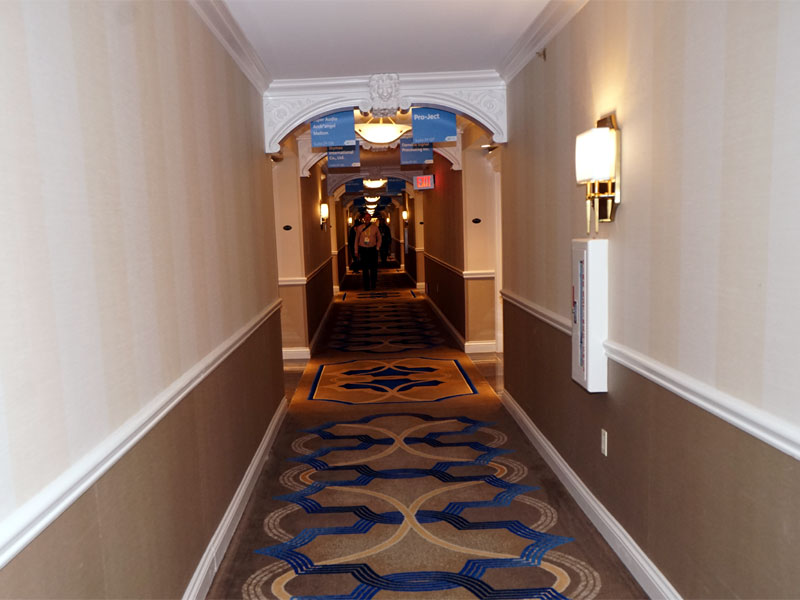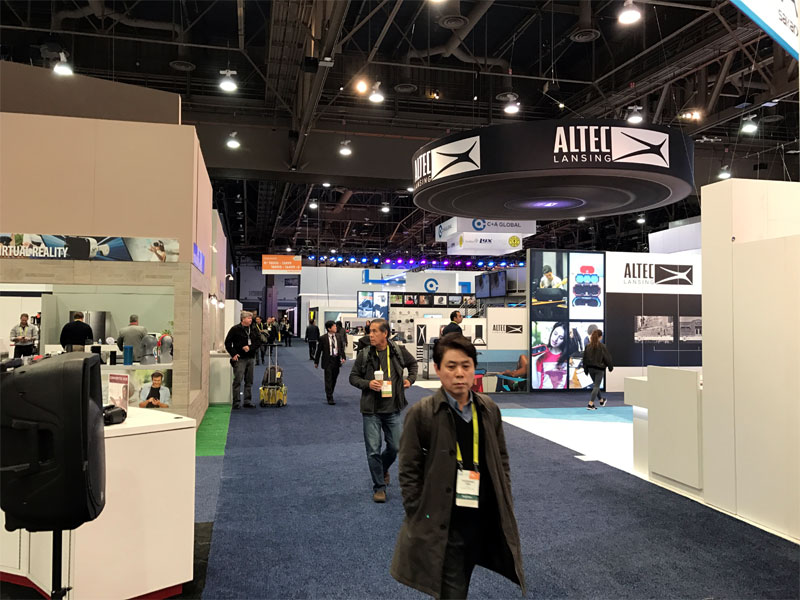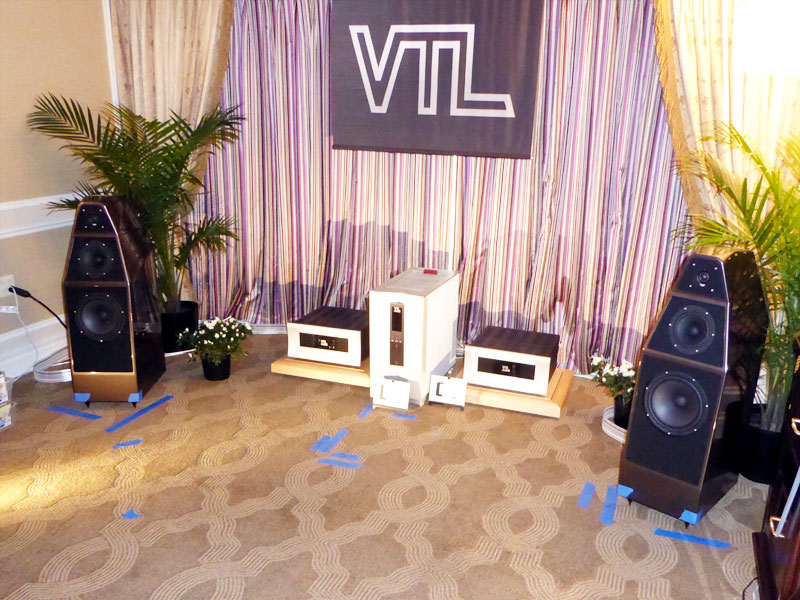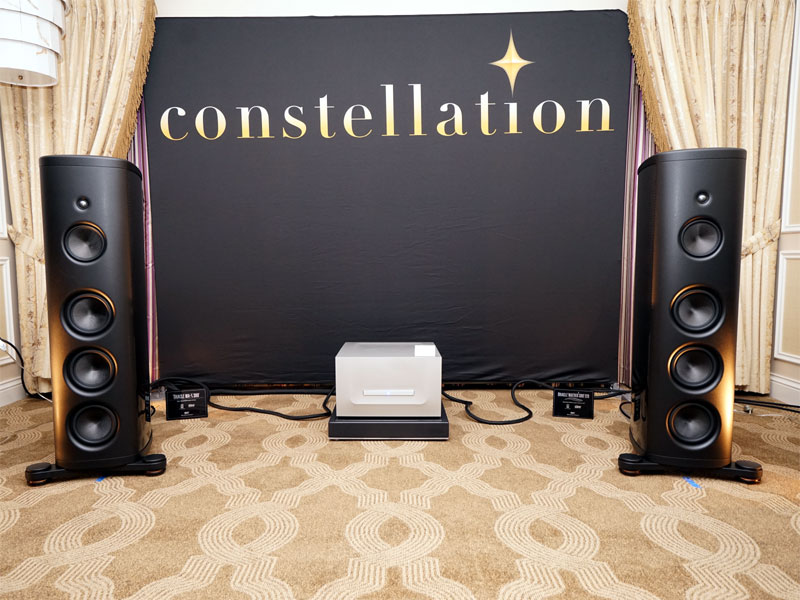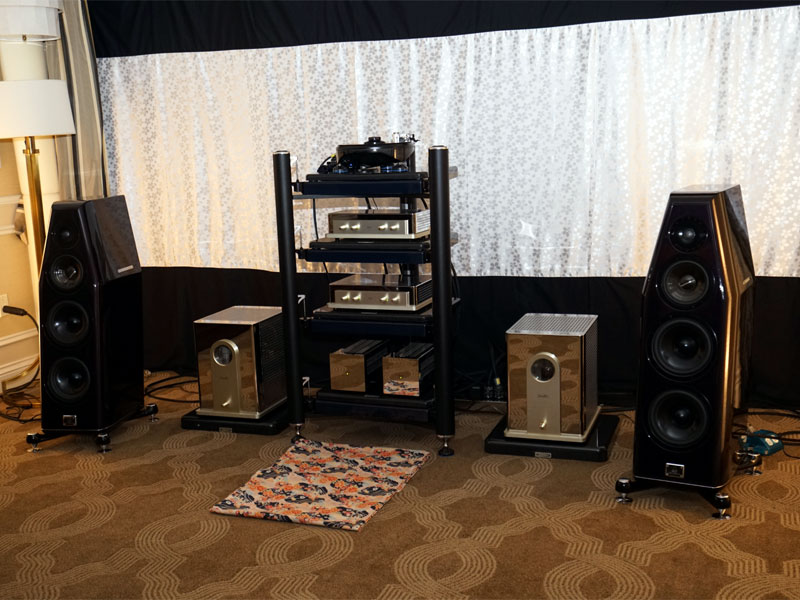CES 2017 • TABlog
t times, roaming the halls of CES this year brought up images of the most outside of sports -- bowling. Frequently, I could look down almost any hallway on any of the show floors of the Venetian and literally roll a bowling ball down its length without making any human contact. Rooms with especially good sound sometimes had the best seats taken, requiring a few minutes wait, or a return visit, but not once did I have to turn sideways and squeeze through a mass of humanity to check out what was on the other side of the room or navigate a hallway.
While a direct comparison is not entirely apt, because the High End show in Munich is open to the public and CES is not, I’ll make it anyway, as it is also not entirely off point. The Munich show stands in stark contrast to recent CESes or other US shows in this regard. Despite the fact that the halls in Munich are wider and the rooms larger than most of the Venetian rooms, the crush of humanity is dramatically greater -- every day, all day, everywhere. The lack of crowds at CES this year was not limited to the high-end-audio ghetto.
On the last day of CES, I traditionally take a break from the Venetian and check out the new toys at the Convention Center. My usual reaction is to run from the center before long like the figure from Edvard Munch’s best-known composition, screaming to myself that I will never return. Return I did, and this year I found a bit of a change. Both the volume of traffic and noise were noticeably reduced from prior years. I could have comfortably spent the day in the Convention Center, had I a sufficiently high interest in intelligent washing machines, self-driving cars, drones, video displays, cameras and streaming audio. Part of the blame for this belongs on the doorstep of the show organizers. High-end audio was always a poor relation and never seemed to have the support of the organizers. Moving the high-performance audio part of the show from Alexis Park to the Venetian many years ago drove up exhibitor costs and deprived audio of its enclave of camaraderie. That was somewhat ameliorated when THE Show opened up shop in the Flamingo for the less well healed to have a place to park their wares. When that folded, the only offsite high-end venue, the Mirage, was for the super-high-end manufacturers who could afford the larger and more resplendent rooms. However, a significant factor in this decline in attendance may be that cultural influences in the US are no longer as conducive to this kind of show. As the industry shifts more of its resources to high-resolution streaming, the number and complexity of physical products to sell dwindles. It is no coincidence that all three major labels, Pandora and the RIAA announced their support for studio-quality high-res audio for music streaming on the first day of the show. While this is a good thing, it is also a harbinger of a trend away from much of the product that high-end audio is all about. If music is not associated with physical product, and acquiring music never required the physical assertion of leaving a computer screen, why travel across state lines to see physical product? I questioned a Sony representative about the company’s expectation for high-res streaming, and he quickly conceded that it would not replace, and was not comparable to the quality of, analog reproduction. Perhaps he was telling me what he thought I wanted to hear. The US’s major cultural influences going into 2017 are twofold: fewer people purchasing physical music product, whether it be LP or CD; and much of what is sold of any description is purchased and delivered online. Pull your automobile from the garage most any time of the day and you must take care not to back into the line of FedEx, UPS and independent trucking companies lined up to deliver packages along your street. And far too many Americans with unlimited access to untold numbers of tunes on their iPhones and music servers have never read the back of an LP jacket. Notwithstanding the wealth of information available online, the depth of knowledge about musical subjects in the US seems to be at an all-time low. Globalization is also breathing down the neck of CES. Las Vegas is no longer the center of the universe and the US no longer dominates the manufacturing and purchasing of high-end goods. The same equipment manufacturers that rent space at CES are also now called upon to be constantly on the road to cover an increasing number of US and international shows. No doubt some companies are rethinking whether their needs are being served by the high costs of exhibiting at CES, where all costs are jacked up during the week. With shows in Hong Kong, Tokyo and Munich, Las Vegas seems like a very long way from the rest of the world. For the audio press this year’s empty halls had a silver lining: several exhibitors remarked that there were more press than buyer visits. The lack of traffic made it much easier to cover, and fewer people in the halls made it much easier to get from one room to the next and made it feasible to actually go into every room in the Venetian. Of course, most demo systems sounded their best on Sunday after added warm-up and adjustment time, and by Sunday attendees were few and far between.
I had the room to myself at the Mirage, listening to the Wilson Audio Alexx speakers ($109,000/pair) driven by D’Agostino Momentum amplifiers ($55,000/pair) and sourced from a full dCS Vivaldi 2.0 stack ($114,996 total) via Transparent Audio Opus cables and isolated on HRS MXR racks. The sound was engaging, as musical as one finds at a show. I could easily have spent the entire afternoon here.
Over in the Venetian, the VTL room with Wilson Yvette speakers ($25,500/pair), a full complement of VTL electronics (S-400 II, $33,500 or MB-450 III amplifiers, $20,000/pair; TL-7.5 Series III, $25,000 or TL-6.5 II, $15,000 preamps; TP-6.5 Signature, $15,000 or TP-2.5, $3750 phono stage) and a Brinkmann Balance turntable with 1.2 tonearm ($27,490) all supported on HRS racks and connected with Nordost Odin 2 cables, was sounding better and better during my daily visits. I never wanted for a seat and never wanted to leave, noting several new LPs for my want list.
The Constellation Audio system with Magico M3 speakers ($75.000/pair), sounded superb but saw light traffic.
The Zanden system (Model 9600 Mk 2 amplifier, $57,200; Model 3000 Mk 2 preamp, $23,000; Model 1200 Mk 3 phono stage, $25,000) with Kharma db9S speakers ($37,500/pair) and a Grand Prix Audio Monaco 2.0 turntable ($37,500) sounded exquisite on the last day of the show, and I did not have to bruise my elbows getting the best seat in the house. Each of these rooms provided a singular atmosphere of exceptional sound and music. I was mindful not only of the dichotomy between the instant-gratification culture that dismisses such beauty but also the rare privilege of being able to appreciate equipment at once so elegant and so extravagant. In today’s populist-movement culture, it’s easy to reject such things. I thought about this conundrum the day before arriving in Las Vegas, as I strolled the halls of the DeYoung Museum in San Francisco to see a Frank Stella exhibit. Laid out in long halls that echoed the narrower confines of the Venetian, the Stella creations reminded me that their existence is not justified by whether everyone could afford one -- these are creations only a philanthropist could take home. Yet, like the highest creations of the audio industry, our society would be threadbare without them.
The sound in the rooms I note above was, in each case, like a jewel box or an oasis -- almost everyone had a record player and a CD spinner. None of these exhibitors, and indeed very few throughout the show, offered downloaded or streamed music as the only source. Great audio works of art were available for appreciation for four days at CES, and in many cases the sound in these rooms was exceptional despite the limitations imposed by time and space. What the future holds for high-end audio at CES may be no
more easily predicted than a US presidential election. I can’t wait to hear the
official attendance figures to see how many records were broken. At least in the hallways
this year, more than a few manufacturers were bowling nothing but strikes. |

